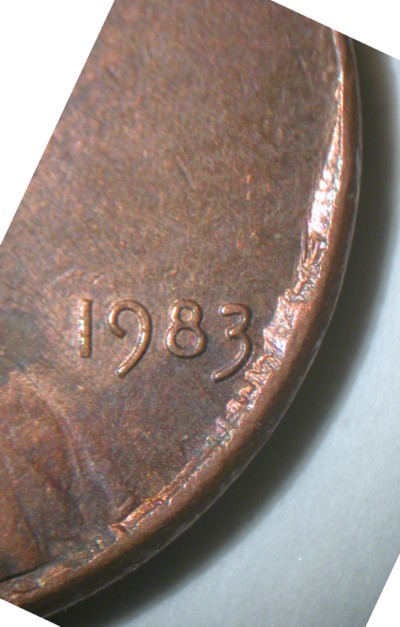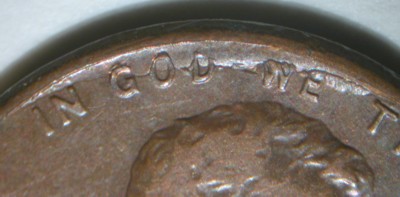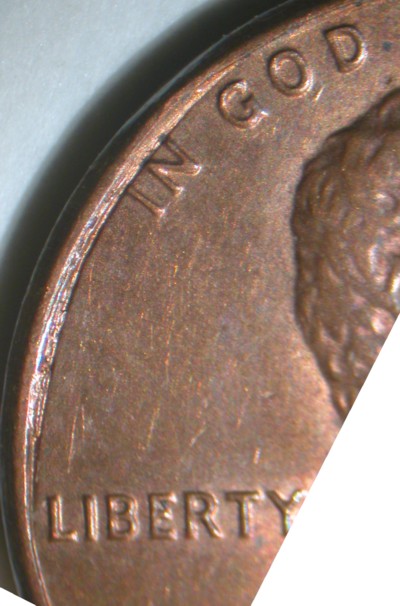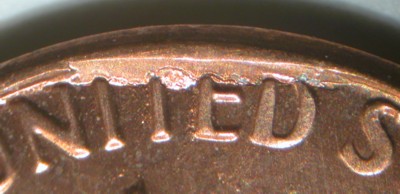PART IV. Die Errors:
Die Damage:
Peripheral Die Damage
Definition: Peripheral die damage has many causes and results in marginal die loss. A die attrition error is a type of peripheral die damage (see Die Attrition Error). The edge of the die can be chipped off or worn away as a result of accidental contact with the collar or other machine part.
Below are four examples of peripheral die damage.
A long strip of peripheral die damage on the right side of a 1983 Lincoln cent extending from 3:00 to 5:30 (obverse clock position). The internal border has a jagged appearance, but it is clear that it’s not due to a natural, spontaneous fracture. First of all, the design rim appears to be intact, which rules out a cud. Second, within the zone of damage there are numerous short, obliquely oriented ridges extending in from the rim and terminating in the field. These ridges are something you never see in cuds and are clearly the result of mechanical damage.

A second 1983 cent shows a similar case of peripheral die damage. Again, the design rim is intact. This indicates that the damage is restricted to the edge of the field portion of the die or, to put it another way, the medial wall of the rim gutter. Something has chipped or worn away this part of the die.


